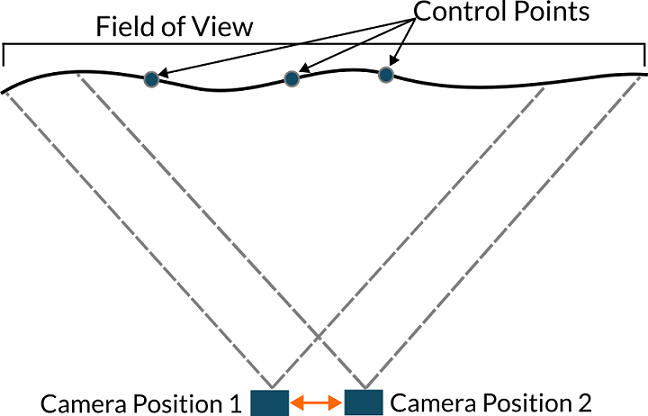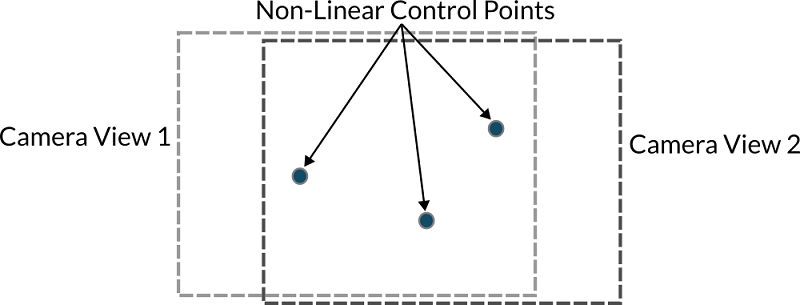Capturing Images for Photogrammetry Using a Single Camera
Unlike stereo cameras, which are made with multiple lenses to capture 3D images, single cameras can only take one image at a time. They can still be used to capture images for photogrammetry; however, particular photography methods need to be used. The models created in Sirovision rely on image stereo pairs with slightly different perspectives, similar to how the positions of your eyes can perceive 3D images.
Important: When using a single camera for photogrammetry, the camera must be moved for each image in a pair, not just rotated.
The diagram below shows a birds-eye view example of how you should take images for an image pair using a stereo camera. In order to create a 3D model to use in Sirovision, after taking the first image you must move the camera to the side to capture a slightly different perspective of the same area.

The exact distance from the subject that you take your photos, or how far you move your camera between stereo pairs, largely depends on your situation. As a general guide, you should consider moving the camera 1/30th of the distance between you and the pit wall or rock face. For example, if you are 5 metres away, move the camera 10 cm to the side between taking the first and second image of the pair. If you are 30 metres away, move the camera 100 cm (1 metre).
The pit wall or rock face you are photographing also needs marked control points for georeferencing, so that Sirovision and PixPro can correctly match the locations in the image pairs. The diagram below shows an example of how control points could be set up on the rock face for georeferencing. All three points are captured by both images and the points are not set out in a linear pattern. The points should also be spaced far apart.


